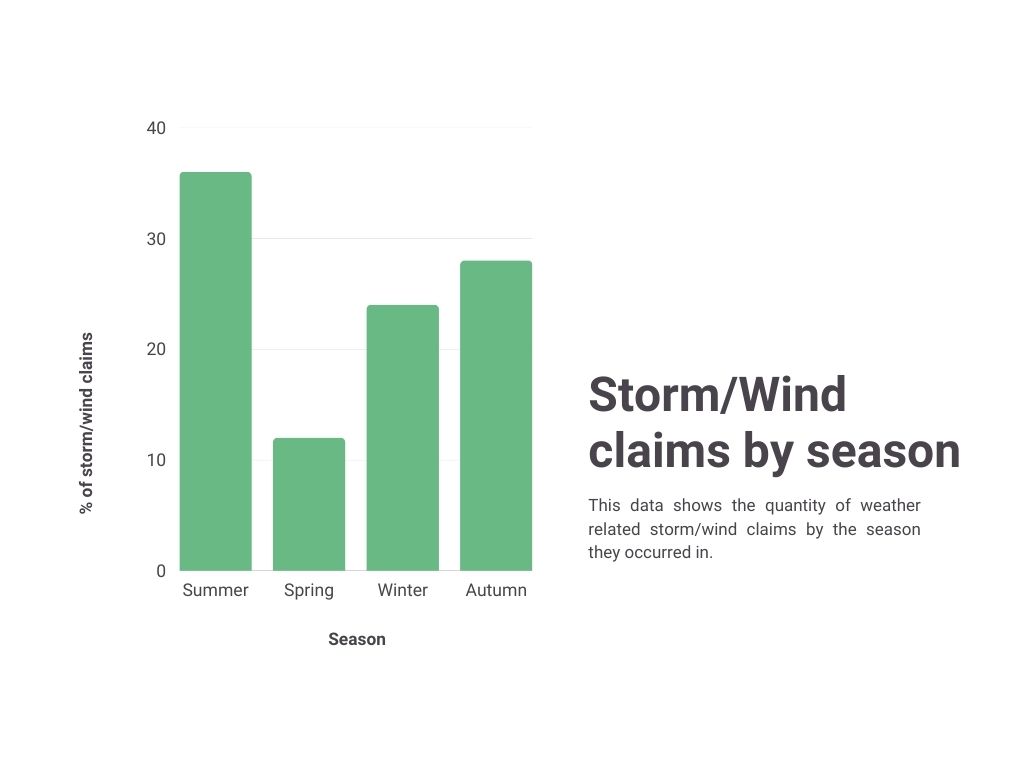12 ways of protecting your house and your tenants.
Winter Checklist 2023
As the winter months approach, it’s important to be prepared for the potential risks that come with the season. At initio, we’ve observed a significant increase in claims during winter, mainly due to storms, flooding, water damage, and residential fires. With this in mind, we’ve compiled a comprehensive checklist to help you enhance the safety of your rental property and protect your tenants this winter:
Clear and Maintain the Guttering:
Regularly clean and clear the gutters of debris to ensure proper drainage. This preventive measure helps minimise the risk of water damage caused by overflowing gutters during heavy rainfall.
Secure Outside Structures:
Ensure that any external structures, such as trampolines and children’s play equipment, are securely fastened to prevent them from being dislodged and causing damage during storms.
Trim Trees and Remove Overhanging Branches:
Trim tree branches that hang over your property and keep them well-maintained. This practice not only helps keep the gutters clear but also reduces the risk of branches breaking off and causing damage to your home during strong winds.
Check and Repair Window Joinery:
Inspect window joinery and promptly repair or replace any loose latches. This ensures that windows can be securely closed, preventing drafts and maintaining a warm interior during the colder months.
Assess and Secure the Roofing:
Regularly inspect the roof for loose tiles or iron sheets, and promptly arrange for their repair or replacement. This preventive action helps safeguard your property against water leaks and structural damage.
Clean Chimney Flues and Service Heat Pumps:
Annually clean chimney flues and ensure that heat pumps are serviced and cleaned regularly. This proactive maintenance prevents the risk of fires and ensures that heating sources operate efficiently, providing a safe and comfortable environment for your tenants.
Consider Installing Safe and Efficient Heating Sources:
Explore the possibility of installing safe and energy-efficient heating sources, such as heat pumps. Tenants may be willing to pay a higher rent in exchange for the added comfort and reduced utility costs.
Remove Curtains from Kitchen Windows:
Consider removing curtains from kitchen windows as they can serve as a potential fuel source for fires. Opting for blinds or window treatments made from fire-resistant materials can be a safer alternative.
Promote safe cooking practices:
Insist that tenants use camping-type gas cookers outdoors only. Indoor use of such cookers poses both a fire hazard and a health risk.
Test Smoke Alarms Regularly:
Regularly test smoke alarms during property inspections. If tenants are prone to removing batteries, consider replacing them with newer models that have sealed 10-year batteries, minimising the chances of non-functioning smoke alarms.
Check Power Points for Overloading:
Inspect power points for overloading, as faulty power boards are a common cause of fires. Install additional power points where necessary to distribute electrical loads evenly and reduce the risk of electrical fires.
Verify Ceiling Insulation around Downlights:
For properties with downlights installed prior to 2012, check that the ceiling insulation has the appropriate spacing around the lights. This step helps prevent overheating and potential fire hazards.
As you can see in the below graphs, Autumn is when we experience the most Flooding & Rain claims compared to other seasons. It’s also the second highest month for Storm & Wind related claims. So, it’s the perfect time of year to go through the checklist mentioned above to make sure you and your property stay safe.


While having comprehensive landlord insurance acts as a ‘safety net’, it is always best to be proactive in protecting your investment. By implementing this checklist, you can ensure a trouble-free winter for both your property and tenants. Stay ahead of the risks and enjoy the peace of mind that comes with a well-prepared and secure home.